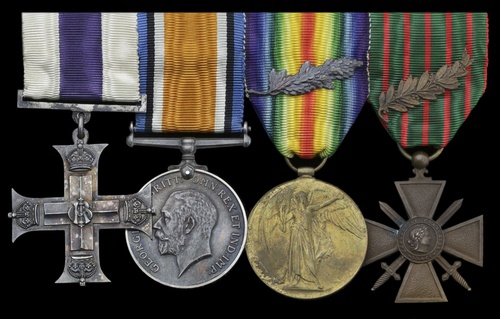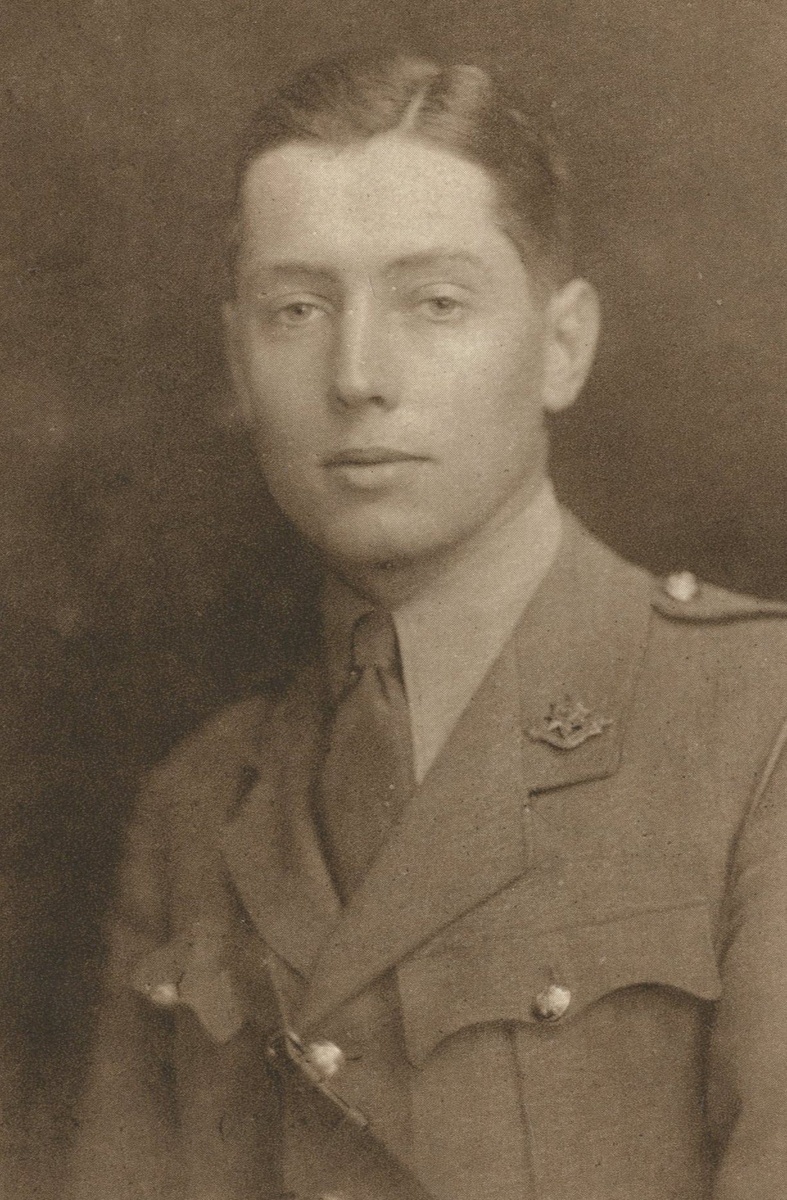Auction: 20002 - Orders, Decorations, Medals & Space Exploration
Lot: 584
The emotive Great War M.C. and Croix de Guerre group of four awarded to Major R. H. Freeman, Royal Air Force, late Worcestershire Regiment and Royal Flying Corps, a talented Squadron Commander who was decorated for rescuing a comrade from his stricken aircraft after a fierce dogfight over Gaza
Military Cross, G.V.R., the reverse contemporarily engraved 'Capt. R. H. Freeman. R.A.F. Egypt. 1915.; British War and Victory Medals (Major R. H. Freeman. R.A.F.); France, Republic, Croix de Guerre, with Palme upon riband, very fine (4)
M.C. London Gazette 26 January 1917:
'For conspicuous gallantry in action. He attacked and drove off an enemy aeroplane which had forced one of our machines to land. Later he landed and rescued the pilot under very difficult conditions. He set a fine example of courage and initiative.'
Croix de Guerre London Gazette 21 May 1917.
Russell Herbert Freeman was born on 27 January 1894, one of the eight children of William Robert Freeman and his wife Ann Farquharson Carr Dunn. Freeman's grandfather had been a partner in Mowlem, Freeman and Burt, a quarrying and construction firm which provided stone for many early Victorian building projects, such as the paving for Blackfriars Bridge. Freeman's father also worked in the firm. The family lived at 103 Westbourne Terrace, Paddington, London.
Educated at Winchester College, Freeman went up to Christ Church, Oxford to read medicine in 1912. He interrupted his studies to join the Worcestershire Regiment, commissioning as 2nd Lieutenant with the 6th (Reserve) Battalion on 2 February 1915. Stationed at Portsmouth for most of the war, this Battalion sent drafts of recruits to the regular Battalions in France, but Freeman was not among them. Instead he undertook flying training at the Military School, Shoreham, gaining his Royal Aero Club Aviator's Certificate flying a Maurice Farman bi-plane on 9 February 1916. Transferring to the Royal Flying Corps with the rank of Pilot Officer, he served in Palestine with No. 14 Squadron, equipped with B.E.2.c. bi-planes. The Squadron also possessed two Martinsyde scouts.
On 24 November 1916, two Martinsydes, one from No. 1 Squadron piloted by Lieutenant Muir and the other from No. 14 Squadron, piloted by Freeman, undertook a bombing raid over Turkish-held territory. They took off from the Mustabig advanced landing-ground, flying over a long stretch of the enemy's country including the Dead Sea. They then bombed the vital Hejaz railway, hindering the Turkish offensive against the Suez Canal. Muir and Freeman both returned to base unchallenged.
On 2 December, Freeman flew alongside Lieutenant Minchin of No. 14 Squadron in a reconnaissance over Gaza and Beersheba. This time, Two Fokkers and an Aviatik were waiting for them. The German planes shot holes in both of Minchin's tanks, forcing him to crash-land at Rafa, deep within enemy territory. Freeman not only drove off Minchin's assailants, but stayed close to his comrade's plane as it spiralled down, landing just beside it. Dragging Minchin from the wreckage, Freeman brought him safely back to British lines. For this selfless act of courage, Freeman was awarded the Military Cross and Croix de Guerre. His promotion from Pilot Officer to Flight Commander was announced in the London Gazette on 23 December.
On 3 July 1917, Freeman was appointed Squadron Commander at what is now R.A.F. Akrotiri. Three days later he was mentioned in dispatches for his earlier services in Egypt. In early 1918 he was promoted to Major and given command of No. 73 Squadron on the Western Front, flying Sopwith Camel D1918. This Squadron produced no fewer than ten aces during the Great War. Freeman shared a kill of a Fokker D.R.1. with William Stephenson, Robert Chandler and others.
According to a French combat report, at 6.45 p.m. on 21 July 1918 Freeman was seen in combat with an enemy aircraft over Fere-En Tardenlois. Reported 'missing', he was never seen again. His adversary was Lieutenant Harry Von Bülow-Bothkamp of Jasta 36, a much-vaunted German ace who went on to claim another dozen kills as a Messerschmitt pilot during the Second World War. Freeman was his sixth and final victim during the Great War.
Aged just 24 at his death, Freeman is buried in Raperie Cemetery, Villemontoire (Grave Ref. VII.D.2). He is also commemorated on the war memorial at St. John's Church, Hyde Park. Two of his brothers won the Military Cross during the Great War. One was killed during the German Spring Offensive in 1918, while the other went on to become Air Chief Marshal Sir Wilfred R. Freeman, G.C.B., D.S.O.; sold with a folder of copied research and photographs.
Subject to 20% VAT on Buyer’s Premium. For more information please view Terms and Conditions for Buyers.
Sold for
£2,600
Starting price
£2600
Sale 20002 Notices
Appears to also be entitled to a 1914-15 Star.







